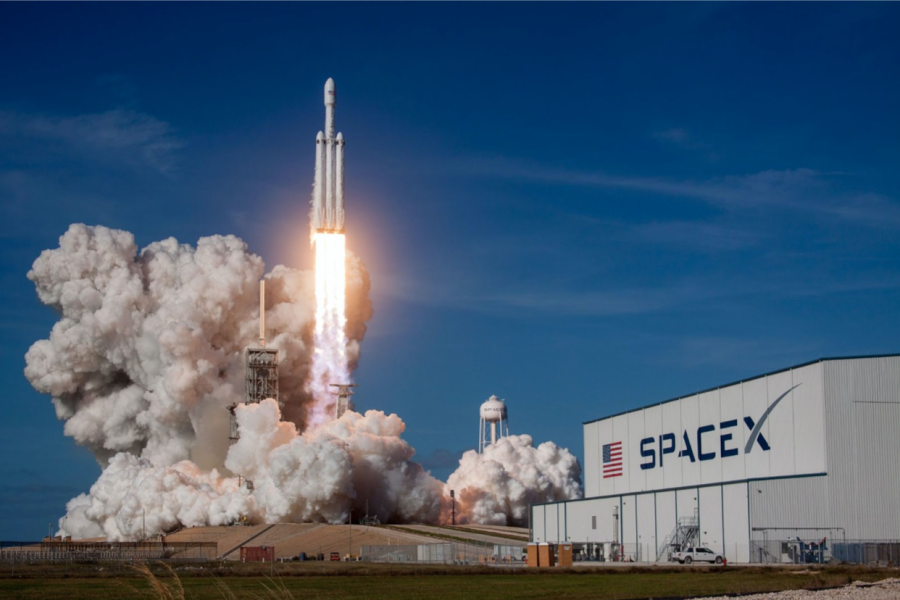“Starships Were Meant to Fly”: The Great Explosion of SpaceX’s Starship
About
On Thursday, April 20, SpaceX’s Starship, the largest and most powerful rocket ever built, lifted off from a launchpad in South Texas and self-terminated before it could reach orbit.
The super heavy-lift launch vehicle, a rocket that can lift more than 110,000 pounds from the ground to low Earth orbit, took off in a cloud full of smoke and dust at 9:33 am EST. Around three minutes and 50 seconds after the rocket launched, it began spinning uncontrollably. Then, at four minutes, the rocket finally exploded, which, ironically, resulted in an eruption of applause from the viewers. Although many of Elon Musk’s critics were quick to label the launch a failure, many professionals actually congratulated Space X on their success. Even though the launch never reached orbit, it served as a learning opportunity to help the spaceflight company work toward more successful missions in the future.
One of these professionals, NASA administrator Bill Nelson, commended the company on Twitter. “Every great achievement throughout history has demanded some level of calculated risk because with great risk comes great reward,” lauded Nelson. “Looking forward to all that SpaceX learns, to the next flight test—and beyond.”
Elon Musk, the founder of SpaceX, lowered the public’s expectations before the rocket launch through the absence of a confirmation regarding the reliability of the rocket system’s design. He anticipated several attempts might be necessary before Starship could complete the test flight successfully. Despite these concerns, the launch marked multiple significant milestones. For example, engineers obtained valuable data from this brief flight to analyze and evaluate the spacecraft’s performance, including the considerable distance the rocket traveled from the launchpad.
Each of these small steps forward will bring us closer to Musk’s original goal for Starship: to send humans to live on Mars. Other goals for the powerful rocket include transforming it into a fully reusable vehicle that would lower the cost of sending things to space. SpaceX’s Phil Larson, a former White House space adviser during the Obama administration, even expressed that reusable rockets have an enormous potential to revolutionize transportation to orbit and “enable whole new classes of missions.”
Space X is now on their way to building a version of Starship that will take two astronauts to the moon during the Artemis III mission, and one day carry massive amounts of cargo and many people into space.
Effects
Although this explosion marked success and progress for SpaceX, it was detrimental to the rocket’s environmental surroundings. The space company chose not to place basic safety measures, such as a trench and water deluge system, to absorb the force of Starship’s blast. These structures would have protected the quarter’s surrounding area and the rocket itself, but instead, Starship destroyed its launch pad, creating a 25 feet deep hole and a cloud of debris that settled on a town 6 miles away from the launch sight.
U.S. Fish and Wildlife, a federal agency that manages national wildlife refuges and protects endangered species, reported that a “3.5-acre fire started south of the pad site on Boca Chica State Park land.” FWS also found large concrete chunks, stainless steel sheets, metals, and other parts of the rocket, along with about 385 acres of debris, on SpaceX’s facility and the surrounding land. These lethal pieces could potentially kill animals occupying the area surrounding SpaceX.
Furthermore, since Cameron County closed down Boca Chica Beach and State Highway for 48 hours due to launchpad concerns, the FWS staff could not “[access] refuge-owned and managed land” until mid-morning on April 22, delaying chances for the biologists to find any damages the explosion might have caused, including deaths.
After learning of these harmful effects, a league of advocacy groups filed a lawsuit against the U.S. Federal Aviation Administration (FAA) due to its flawed environmental assessment of SpaceX’s Starship launch plans. Even though the administration required the company to perform a series of measures to limit any environmental impacts to the surrounding area, the lawsuits stated that these requirements were insufficient to fully understand the effects of repeated Starship launches on the environment. This suit asks that the court rescind SpaceX’s launch license until the FAA can administer a flawless, full environmental assessment.
This lawsuit highlights the potential impacts of space launches on the environment, reminding us of the importance of balancing progress with environmental responsibility. It is up to us to consider the long-term effects of these space endeavors on our planet.

Sasha is a senior who is ecstatic to spend her fourth and final year writing for the Banner as Business Editor. When she is not writing, Sasha fills her...


